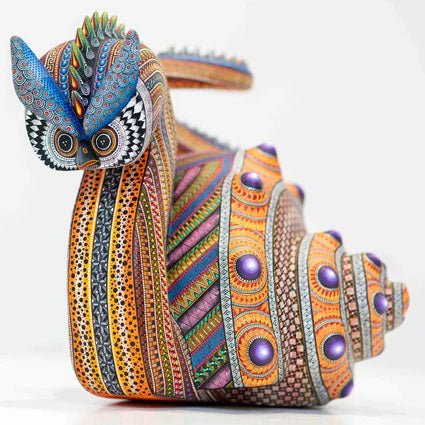Origin of the Alebrije

Alebrijes and Fantastic Figures
In addition to Judas, masks, skulls, dolls and horses painted in colors, the alebrije stands out in the traditional cartonería; Its origin comes from the dream of the artisan Pedro Linares, in which he found beings in a forest and heard a group of people enunciate the word "alebrijes".
Through a creative process that involves overcoming techniques and that does not refer only to manual dexterity to come into contact with the gummed paper and obtain the desired shapes, popular artists combine vibrant colors to generate these imaginative and surreal sculptures, giving them an original sense for the spaces to inhabit.
Owners of dreams, fantasies of unimaginable forms, the alebrijes gather in a single piece figures of real and hallucinated beings, generally zoomorphic, that mix in a capricious way. Some of them can be monstrous and terrifying, although most of them maintain a certain mischief.
Devils, vipers, lizards, animals never seen before, fantastic beings covered with brilliant colors by limitless expression and placed in unlikely situations, make up the wide repertoire of alebrijes. Some other fantastic figures made with the same technique represent characters in whom, in a symbolic way, the vices of society are reflected.
Currently Alebrije is also called those that were originally "Fantastic Animals", copal wood figures painted with handmade pigments and acrylics made in the state of Oaxaca.
Woodcarving is an infinite reservoir of creativity in the hands of Oaxacan artisans. Today approximately two hundred families are engaged in this trade.
These fantastic figures, which represent animals such as mammals, birds or reptiles, imaginary and real creatures, are the essence of a deep-rooted tradition of identity for the people of San Antonio Arrazola, San Martín Tilcajete, San Agustín de las Juntas, Oaxaca, among others. towns.


